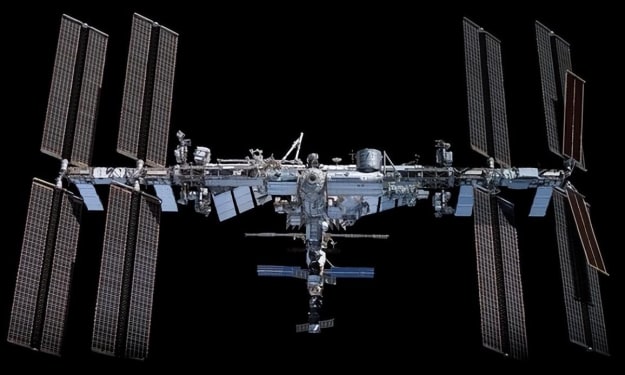Infrared sensing makes a big difference
Venus Weather May Be Revealed, Venus Secrets Ahead

In a new study, scientists reveal Venus' nighttime weather for the first time
What is the weather like at night on Venus? Scientists have finally found the answer.
The first Venus probe was launched in 1978, and we've been studying the neighboring planet for a long time, but until now scientists have known little about its nighttime weather conditions.
In a recent study, the Japanese Venus weather satellite Sukiyaki, which arrived near Venus' orbit in 2015 with an infrared sensor, has revealed nighttime meteorological imaging of Venus, showing nighttime cloud cover and strange atmospheric circulation distributions.
Like Earth, Venus is in the habitable zone of the solar system, with a hard, rocky surface and an atmosphere. Researchers have used infrared light to look at the movement of clouds on Venus to investigate its weather conditions. Venus has a fast rotating atmosphere, but the slowest rotation in the solar system, with a day/night rotation of about 240 Earth days.
Until now, only the side facing the Sun has been easily observable. Although some infrared observations of nighttime weather are possible, we cannot paint a clear picture of Venus' overall weather.
To explore this mysterious neighbor, scientists have turned their attention to DAWN, the first Japanese probe to orbit a non-terrestrial planet. It carries an infrared image that doesn't rely on solar illumination to observe, but even that can't directly distinguish the details of Venus' nighttime scenes. But with the help of a new analysis method to process the captured data, scientists can indirectly see the hard-to-observe nighttime weather.

"Direct observations of small cloud patterns have weak signals and are difficult to distinguish from background noise." Takes his Samurai, a co-author from the University of Tokyo's Graduate School of Frontier Sciences, declared in a report. "To be able to see the details, we need to suppress the noise." He said, "In astronomy and planetary science, we usually integrate images for processing because the real features are hidden in the noise of a series of similar figures. But Venus is a special case, and because the entire weather system is rotating at high speed, we had to compensate for this motion, also known as 'super-rotation,' to highlight the interesting formation process."
With this analytical approach, the team of scientists observed south-north winds on the planet at night. "To our surprise, they move in the exact opposite direction to the daytime." Samurai said, "This dramatic change could not have been produced without other effects. This observation helps us to build accurate weather models of Venus and promises to answer those long-standing questions about Venus' weather and even Earth's weather." The scientists say the method will be followed in future studies to reveal the meteorological details of other planets such as Mars.
Although the current technology is stuck operating near Venus' orbit, three future missions will reach Venus and continue to expand our understanding of it. NASA recently announced two new missions to Venus, named DANCING+ and VERITABLE, and the European Space Agency revealed that it will also launch the EnVision mission to Venus, a trio of spacecraft to be launched at the end of this century and in the early 1930s.
Related Knowledge
Venus, the second closest planet to the Sun among the eight planets in our solar system, has an orbital revolution period of 224.7 Earth days and no moons. In ancient China, it was called Tia Ba, Xingu Xingu, or DA CAI, and in addition, it appeared in the east in the morning as Aiming, and in the west at sunset as Chang Gen. During the Western Han Dynasty, the astronomer Siam Ian, author of "The Records of the Grand Officials", discovered from actual observations that Bait was white, and together with the doctrine of "five elements", he officially named it Venus.
Its brightness in the night sky is the second brightest natural object after the Moon, and its apparent magnitude can reach -4.7 magnitude, which is enough to shine a shadow. Since Venus is an inner planet on the inner side of the Earth, it never orbits far from the Sun: it has a maximum distance from the Sun of 47.8°. Venus is an Earth-like planet, often referred to as the Earth's sister planet because of its size, mass, volume, and distance from the Sun, which are similar to the Earth.
However, it is distinctly different from Earth in other ways. It has the densest atmosphere of any of the four Earth-like planets, more than 96% of which is carbon dioxide, and the atmospheric pressure on the surface of Venus is 92 times that of Earth. With an average surface temperature of 735 K (462 °C; 863 °F), it is the hottest planet in the solar system, hotter than Mercury, which is closest to the Sun. Venus does not absorb carbon into the rocky carbon cycle, nor does it appear to have any organic life to absorb the biomass of carbon.
Venus is covered by a highly reflective, opaque sulfuric acid cloud that blocks visible light from space that might reach the surface. It may have had oceans in the past and looked very similar to Earth, but they all evaporated and were lost as temperatures rose due to the runaway greenhouse effect. Water is most likely subject to photosynthesis into hydrogen and oxygen due to the lack of a planetary magnetic field, and free hydrogen has been escaped by the solar wind atmosphere and swept into interstellar space. The surface of Venus is a desert landscape dotted with rocks that are periodically refreshed by volcanoes.
About the Creator
Many A-Sun
Where your interests lie, that's where your abilities lie.






Comments
There are no comments for this story
Be the first to respond and start the conversation.